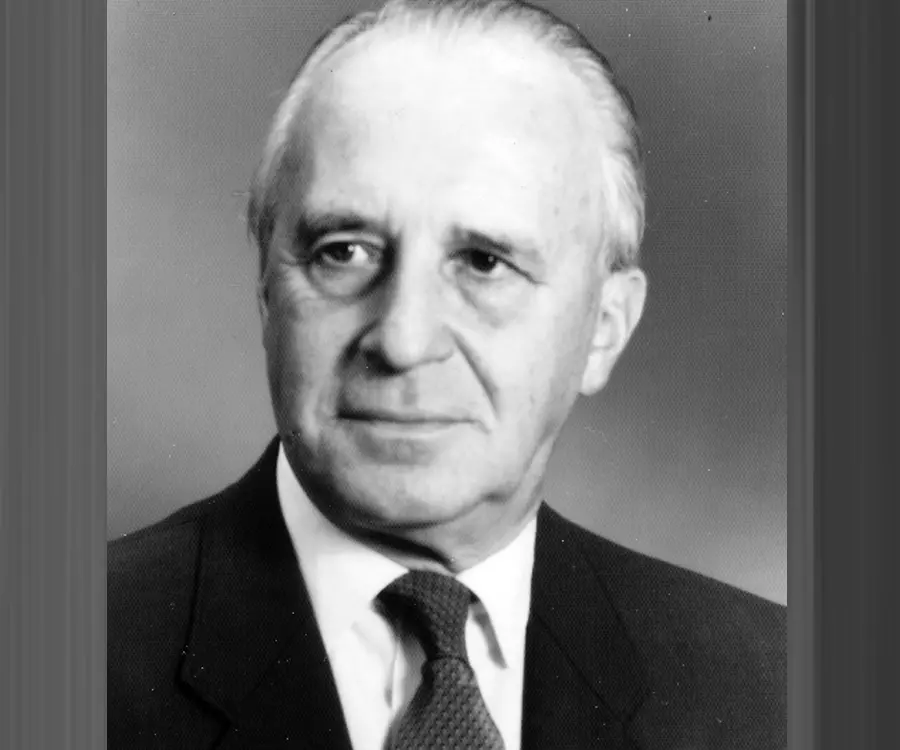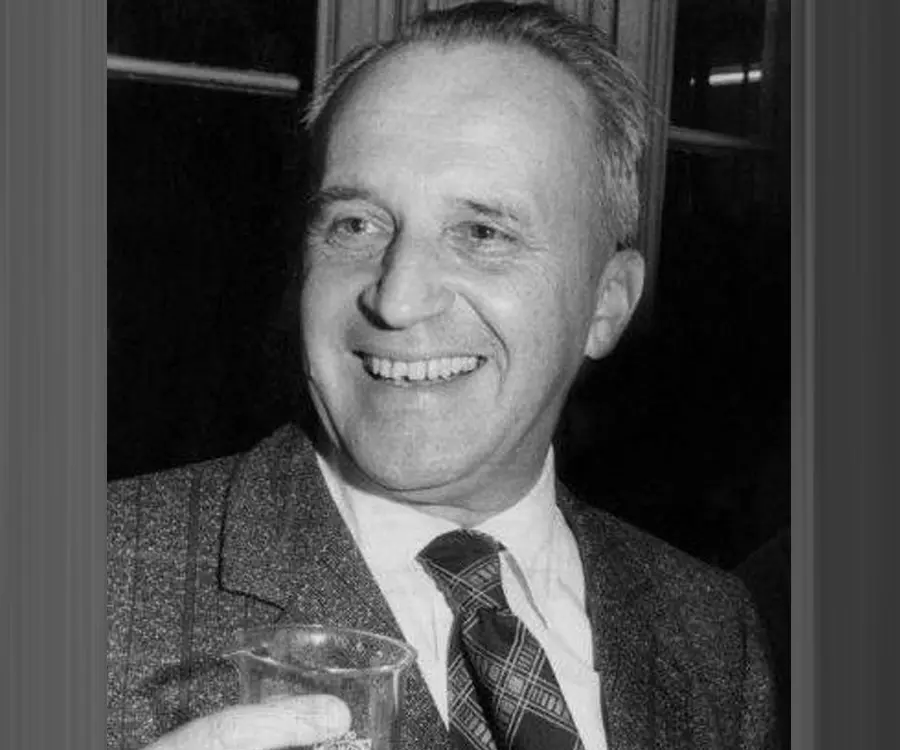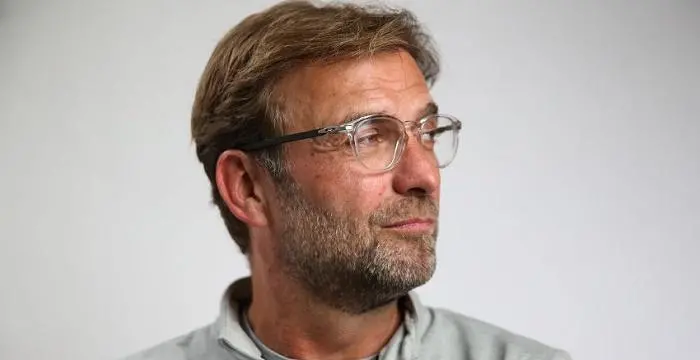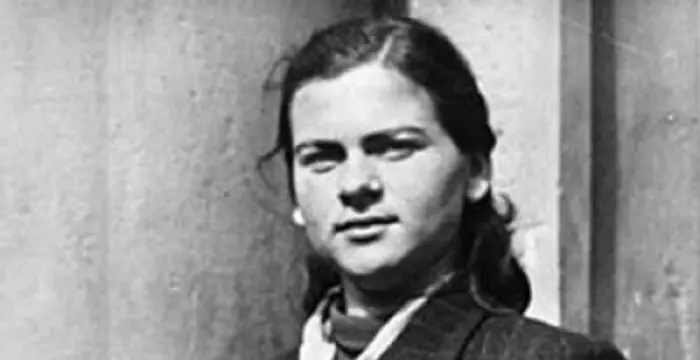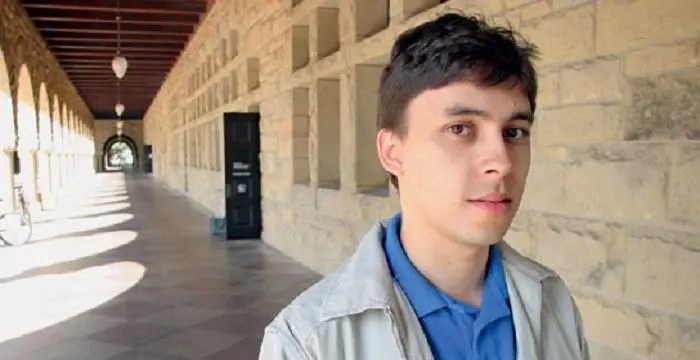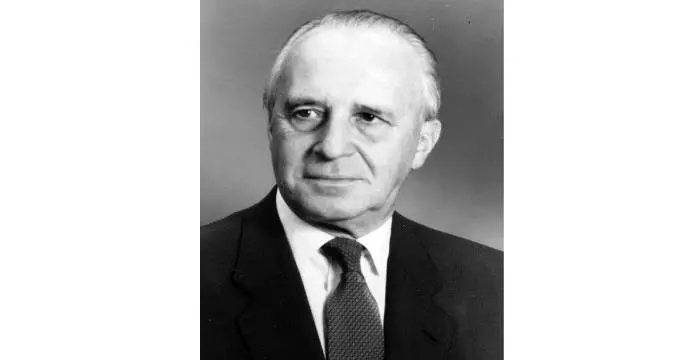
Ernst Otto Fischer - Scientists, Birthday and Childhood
Ernst Otto Fischer's Personal Details
Ernst Otto Fischer was a German chemist and educator who was jointly awarded the ‘Nobel Prize in Chemistry’ in 1973
| Information | Detail |
|---|---|
| Birthday | November 10, 1918 |
| Died on | July 23, 2007 |
| Nationality | German |
| Famous | Scientists, Chemists |
| Universities |
|
| Birth Place | Solln, near Munich, German Empire |
| Gender | Male |
| Father | Dr. Karl Tobias Fischer |
| Mother | Valentine Danzer |
| Sun Sign | Scorpio |
| Born in | Solln, near Munich, German Empire |
| Famous as | Chemist |
| Died at Age | 88 |
// Famous Scientists
Juliane Koepcke
Juliane Koepcke is a German-Peruvian biologist, who was the lone survivor among the 92 passengers and crew of the ill-fated LANSA Flight 508 that crashed in the Peruvian rainforest on 24 December 1971. Know more about her life in this biography.
Henry Cavendish
Henry Cavendish was a theoretical chemist and physicist, renowned for discovery of hydrogen and calculation of the mass of earth. To know more about his childhood, profile, timeline and career read on
Konstantin Tsiolkovsky
Konstantin Tsiolkovsky was a Russian rocket scientist and a pioneer of astronautics. This biography provides detailed information about his childhood, family, personal life, career, achievements, etc.
Ernst Otto Fischer's photo
Who is Ernst Otto Fischer?
Ernst Otto Fischer was a German chemist and educator who was jointly awarded the ‘Nobel Prize in Chemistry’ in 1973 along with English chemist Geoffrey Wilkinson for their independent but related leading-edge work in metallocenes and other aspects in the field of organometallic chemistry. This pioneering work of Fischer included identifying an entirely new technique of combining organic substances and metals. He examined a newly developed organometallic compound ferrocene (chemical formula - Fe(C5H5)2) and came to the conclusion that it is composed of two carbon rings each of five sides, bound on opposite sides of an iron atom. Moving on he began synthesizing other metallocenes like cobaltocene and nickelocene. These organometallic compounds are also called ‘sandwich compounds’. After obtaining PhD from the ‘Technical University of Munich’ he went on to become a Lecturer of Chemistry at the university. His career advanced steadily that saw him holding the position of a Professor of Inorganic Chemistry at the ‘University of Munich’, subsequently becoming the Professor of Inorganic Chemistry at the ‘Technical University of Munich’ and finally holding the Chair of Inorganic Chemistry at the ‘Technical University of Munich’. Apart from the ‘Nobel Prize’ he was the recipient of the ‘Göttingen Academy Prize for Chemistry’ in 1957 and the ‘GCS Alfred Stock Memorial Prize’ in 1959.
// Famous Chemists
Henry Cavendish
Henry Cavendish was a theoretical chemist and physicist, renowned for discovery of hydrogen and calculation of the mass of earth. To know more about his childhood, profile, timeline and career read on
Walter Kohn
Nobel Laureate Walter Kohn was an Austrian-born American theoretical chemist and physicist. Check out this biography to know about his childhood, life, achievements, works & timeline.
Jabir Ibn Hayyan
Jabir Ibn Hayyan was a medieval era polymath. Check out this biography to know about his life, works and achievements.
Childhood & Early Life
He was born on November 10, 1918, in Solln near Munich, Germany, to Dr. Karl Tobias Fischer and his wife, Valentine Danzer as their third child. His father was a Professor of Physics at the ‘Technical College of Munich’.
He attended elementary school for four years and then enrolled at the ‘Theresiengymnasium’, the oldest grammar school in Munich in 1929 from where he completed his graduation in 1937 with Abitur.
While he was on his two years of compulsory military service, the ‘World War II’ started that saw him serving in France, Poland and Russia.
He started studying chemistry at the ‘Technical University of Munich’ during the later part of 1941 while he was on a military study leave. After the Americans released him in the autumn of 1945, he resumed his studies in 1946 following reopening of the ‘Technical University of Munich’ and completed BS in Chemistry from the university in 1949.
He was inducted in the Inorganic Chemistry Institute at the ‘Technical University of Munich’ as a scientific assistant of Professor Walter Hieber, who was considered father of metal carbonyl chemistry. Under the guidance of Hieber, Fischer worked on his doctoral thesis titled ‘The Mechanisms of Carbon Monoxide Reactions of Nickel (II) Salts in the Presence of Dithionites and Sulfoxylates’ and earned PhD in 1952.
Accepting invitation of Hieber, he continued his research work at the college and went on to focus his studies on transition of metal and organometallic chemistry. Through his university lecture thesis, ‘The Metal Complexes of Cyclopentadienes and Indenes’, he pointed out that the molecular structure of ferrocene assumed by Pauson and Keally might be incorrect.
Career
In 1955 he was inducted as a Lecturer of Chemistry at the ‘Technical University of Munich’. The following year saw him completing a scientific sojourn of several months in the US.
He developed a new procedure of synthesizing metals and organic substances. In 1955 Fischer displayed that organometallic compounds, which at present are applied extensively in biological research works as also in industry, could be formed of molecules, a notion thought of to be impossible earlier.
He ascertained the structure of ferrocene, became successful in synthesizing dibenzolchrome from CrCl3 and C6H6 in presence of AlCl3 and came up with a procedure of synthesis of the arene derivatives.
The arenecyclopentadienyl, arenecarbonyl and other mixed π-complexes of the transition elements were first obtained by him. He displayed that when heated these compounds break up to form a ‘metallic mirror’ that can be applied to procure ultrapure metals.
Fischer was the first one to synthesize many organometallic compounds of the transuranium and technetium elements.
From 1957 to 1959 he remained a Professor at the University of Munich. He refused an offer of the Chair of Inorganic Chemistry at the ‘University of Jena’ and became Senior Professor at the University of Munich in 1959. He held such position till 1964.
He turned down an offer from the ‘University of Marburg’ in 1960 for the post of Senior Professor in the university’s Department of Inorganic Chemistry.
From 1964 to 1984 he remained a Professor of Inorganic Chemistry at the ‘Technical University of Munich’ and during that tenure he also held the Chair of Inorganic Chemistry in the university succeeding Professor Hieber.
In 1964 he was able to obtain stable carbene complexes of the transition elements. One of the two types of metal carbene complexes that features strong π-acceptors at the metal and which are electrophilic at the carbene carbon atom are named as ‘Fischer carbanes’ after him. That year he was elected at the ‘Bavarian Academy of Sciences’ as a member of its Mathematics/Natural Science section.
The ‘Academy of Natural Scientists Leopoldina’ of Germany inducted him as one of its members in 1969. That year he worked as Firestone Lecturer at the ‘University of Wisconsin –Madison’.
In 1971 he became the first Inorganic Chemistry Pacific West Coast Lecturer. He also remained Visiting Professor at the ‘University of Florida’ in Gainesville that year.
The Faculty of Chemistry and Pharmacy of the ‘University of Munich’ conferred upon him an honorary doctorate in 1972.
In 1973 he obtained stable carbine complexes of the transition elements. In spring of that year he served as the Arthur D. Little Visiting Professor at the ‘Massachusetts Institute of Technology’ in Massachusetts.
He also remained Visiting Distinguished Lecturer at the ‘University of Rochester’ in Rochester for a while.
He toured around the world including the US, Soviet Union, Australia, Israel, Brazil and Venezuela among others lecturing on metallic complexes of cyclopentadienes and indenes, mono-, di- and oligo-olefins, metal-π-complexes of six-ringed aromatics, metalcarbonyl carbene and carbyne complexes.
He trained legion of PhD and postdoctoral students and many of them achieved great heights in their careers.
Over the years around 450 scientific articles were published by him. He authored two books namely ‘Metal Pi-complexes: Complexes with Di-and Oligo-olefinic Ligands’ along with H. Werner, which was published by ‘Elsevier Science Ltd’ in July 1966; and ‘Transition Metal Carbene Complexes’ along with Karl Heinz Dötz, which was published by ‘Verlag Chemie’ in 1983.
He was a Foreign Member of ‘American Academy of Arts and Sciences’.
Awards & Achievements
He received the ‘Nobel Prize in Chemistry’ in 1973 along with English chemist Geoffrey Wilkinson.
Personal Life & Legacy
Fischer never married in his life.
He passed away on July 23, 2007, in Munich, Germany, at the age of 88 years.
// Famous Scorpio Celebrities peoples
Teddy Zois
Teddy Zois is an American Musical.ly star and social media personality. Let’s have a look at his family and personal life including age, date of birth, net worth, and fun facts.
Kyla Cole
Kyla Cole is a Slovak glamour model and former television presenter. This biography profiles her childhood, life, modeling career, achievements and timeline.
Dominic Tracy
Dominic Tracy is an American YouTube Star. Let’s take a look at his family & personal life including age, date of birth, girlfriends, net worth, and fun facts.
Ernst Otto Fischer's awards
| Year | Name | Award |
|---|---|---|
Other | ||
| 0 | Nobel Prize for Chemistry (1973) | |
Ernst Otto Fischer biography timelines
- // 10th Nov 1918He was born on November 10, 1918, in Solln near Munich, Germany, to Dr. Karl Tobias Fischer and his wife, Valentine Danzer as their third child. His father was a Professor of Physics at the ‘Technical College of Munich’.
- // 1929 To 1937He attended elementary school for four years and then enrolled at the ‘Theresiengymnasium’, the oldest grammar school in Munich in 1929 from where he completed his graduation in 1937 with Abitur.
- // 1952He was inducted in the Inorganic Chemistry Institute at the ‘Technical University of Munich’ as a scientific assistant of Professor Walter Hieber, who was considered father of metal carbonyl chemistry. Under the guidance of Hieber, Fischer worked on his doctoral thesis titled ‘The Mechanisms of Carbon Monoxide Reactions of Nickel (II) Salts in the Presence of Dithionites and Sulfoxylates’ and earned PhD in 1952.
- // 1955In 1955 he was inducted as a Lecturer of Chemistry at the ‘Technical University of Munich’. The following year saw him completing a scientific sojourn of several months in the US.
- // 1955He developed a new procedure of synthesizing metals and organic substances. In 1955 Fischer displayed that organometallic compounds, which at present are applied extensively in biological research works as also in industry, could be formed of molecules, a notion thought of to be impossible earlier.
- // 1960He turned down an offer from the ‘University of Marburg’ in 1960 for the post of Senior Professor in the university’s Department of Inorganic Chemistry.
- // 1964 To 1984From 1964 to 1984 he remained a Professor of Inorganic Chemistry at the ‘Technical University of Munich’ and during that tenure he also held the Chair of Inorganic Chemistry in the university succeeding Professor Hieber.
- // 1964In 1964 he was able to obtain stable carbene complexes of the transition elements. One of the two types of metal carbene complexes that features strong π-acceptors at the metal and which are electrophilic at the carbene carbon atom are named as ‘Fischer carbanes’ after him. That year he was elected at the ‘Bavarian Academy of Sciences’ as a member of its Mathematics/Natural Science section.
- // Jul 1966 To 1983Over the years around 450 scientific articles were published by him. He authored two books namely ‘Metal Pi-complexes: Complexes with Di-and Oligo-olefinic Ligands’ along with H. Werner, which was published by ‘Elsevier Science Ltd’ in July 1966; and ‘Transition Metal Carbene Complexes’ along with Karl Heinz Dötz, which was published by ‘Verlag Chemie’ in 1983.
- // 1969The ‘Academy of Natural Scientists Leopoldina’ of Germany inducted him as one of its members in 1969. That year he worked as Firestone Lecturer at the ‘University of Wisconsin –Madison’.
- // 1971In 1971 he became the first Inorganic Chemistry Pacific West Coast Lecturer. He also remained Visiting Professor at the ‘University of Florida’ in Gainesville that year.
- // 1972The Faculty of Chemistry and Pharmacy of the ‘University of Munich’ conferred upon him an honorary doctorate in 1972.
- // 1973In 1973 he obtained stable carbine complexes of the transition elements. In spring of that year he served as the Arthur D. Little Visiting Professor at the ‘Massachusetts Institute of Technology’ in Massachusetts.
- // 1973He received the ‘Nobel Prize in Chemistry’ in 1973 along with English chemist Geoffrey Wilkinson.
- // 23rd Jul 2007He passed away on July 23, 2007, in Munich, Germany, at the age of 88 years.
// Famous German peoples
Jordan Carver
Jordan Carver is a famous German model. Let’s take a close look at her personal life, including her age, career, net worth, achievements and some fun facts.
Jürgen Klopp
Jürgen Klopp is a German football manager, and a former professional football player. Check out this biography to know more about his childhood, family, personal life, etc.
Irma Grese
Irma Grese was a notorious German Nazi concentration camp guard during the Second World War. This biography profiles her childhood, life, horrifying acts, death and other facts.
Juliane Koepcke
Juliane Koepcke is a German-Peruvian biologist, who was the lone survivor among the 92 passengers and crew of the ill-fated LANSA Flight 508 that crashed in the Peruvian rainforest on 24 December 1971. Know more about her life in this biography.
Jawed Karim
Jawed Karim is a German-American internet entrepreneur, technologist and co-founder of the video-sharing website, YouTube. Check out this biography to know about his childhood, family, personal life, achievements, age, etc.
Charles Bukowski
Charles Bukowski was a German-born American novelist, short story writer and poet. With this biography, learn in details about his childhood, life, works, career and timeline
Ernst Otto Fischer's FAQ
What is Ernst Otto Fischer birthday?
Ernst Otto Fischer was born at 1918-11-10
When was Ernst Otto Fischer died?
Ernst Otto Fischer was died at 2007-07-23
Where was Ernst Otto Fischer died?
Ernst Otto Fischer was died in Munich, Germany
Which age was Ernst Otto Fischer died?
Ernst Otto Fischer was died at age 88
Where is Ernst Otto Fischer's birth place?
Ernst Otto Fischer was born in Solln, near Munich, German Empire
What is Ernst Otto Fischer nationalities?
Ernst Otto Fischer's nationalities is German
What was Ernst Otto Fischer universities?
Ernst Otto Fischer studied at Technical University of Munich
Who is Ernst Otto Fischer's father?
Ernst Otto Fischer's father is Dr. Karl Tobias Fischer
Who is Ernst Otto Fischer's mother?
Ernst Otto Fischer's mother is Valentine Danzer
What is Ernst Otto Fischer's sun sign?
Ernst Otto Fischer is Scorpio
How famous is Ernst Otto Fischer?
Ernst Otto Fischer is famouse as Chemist



